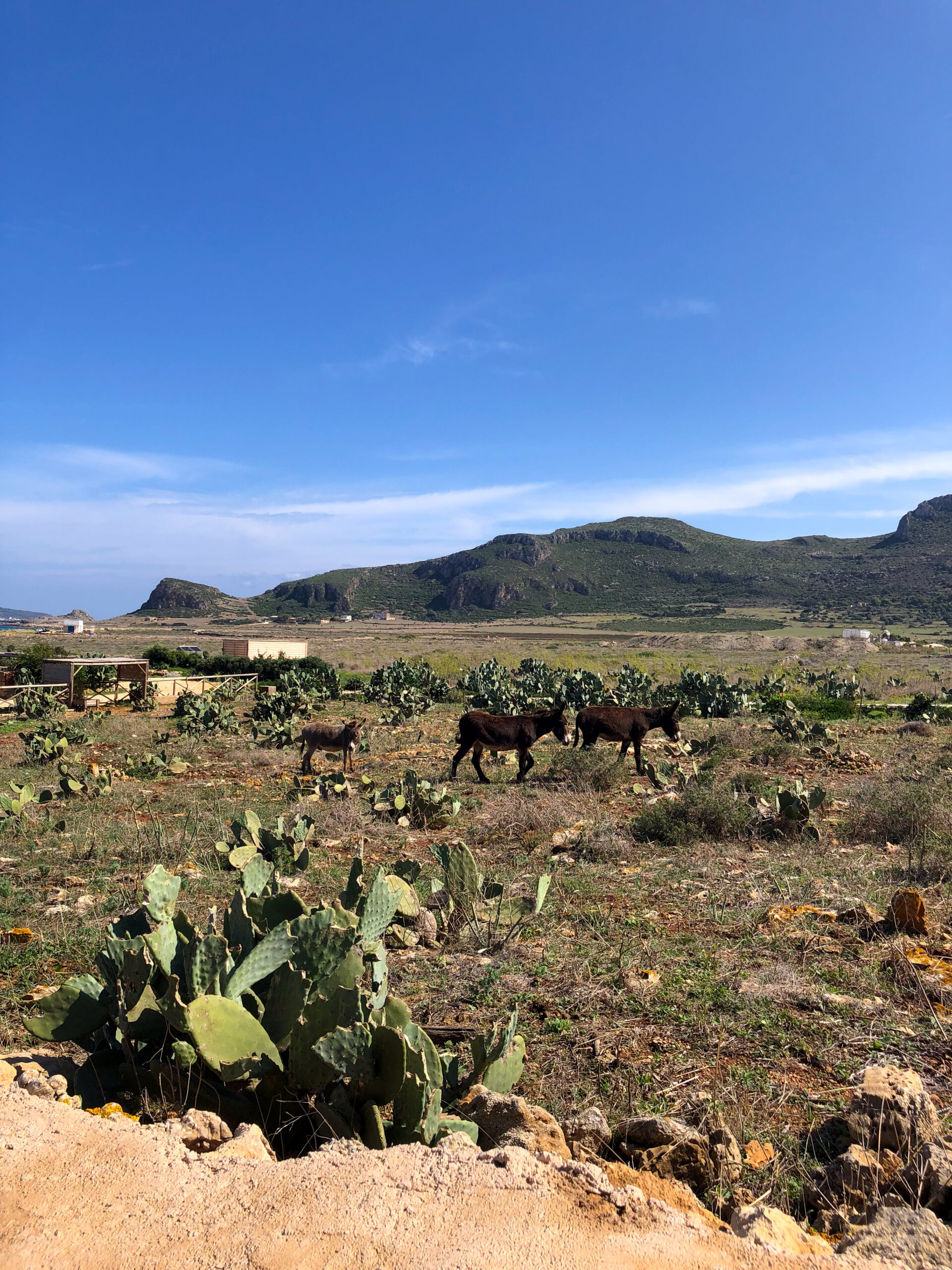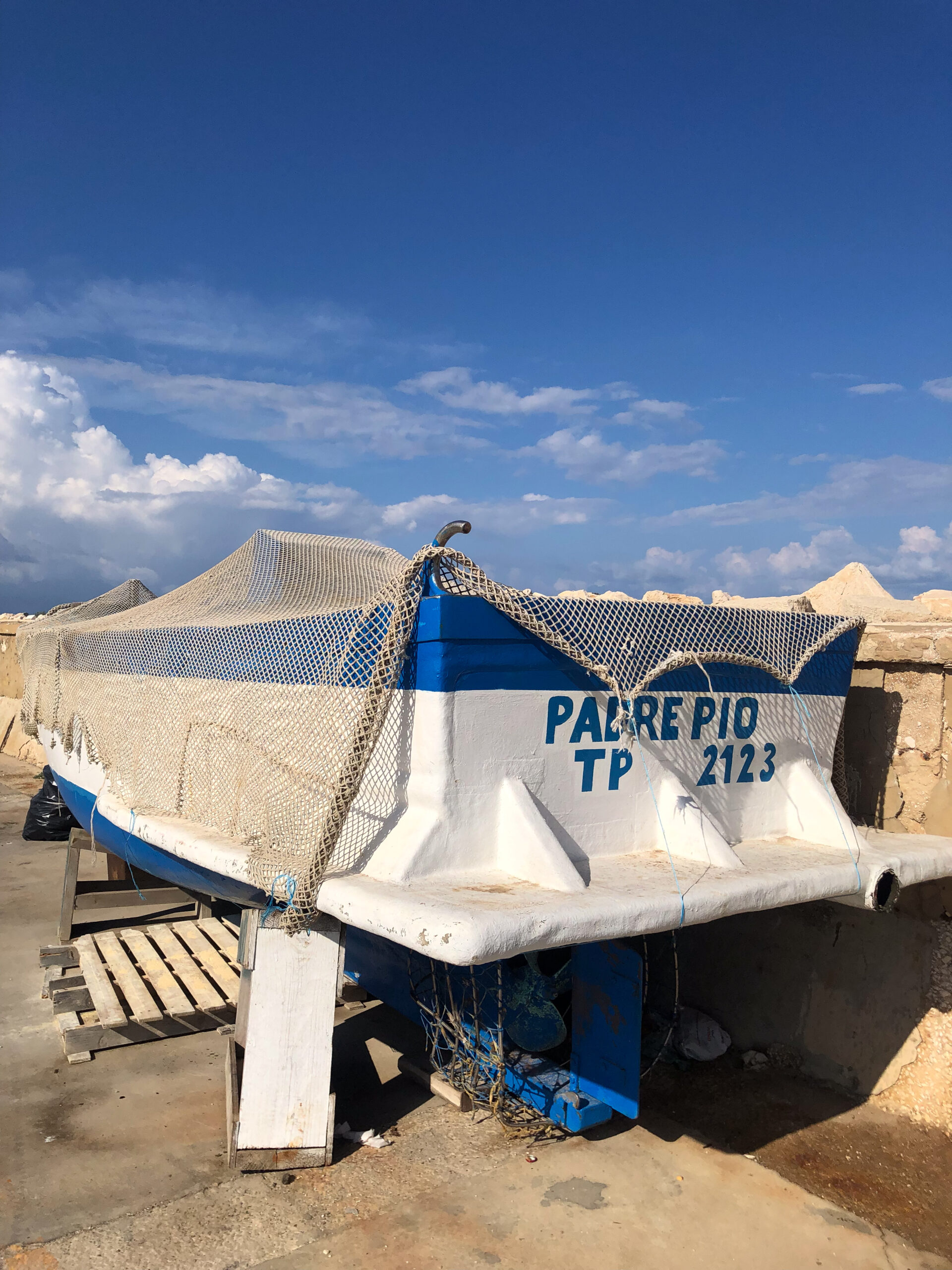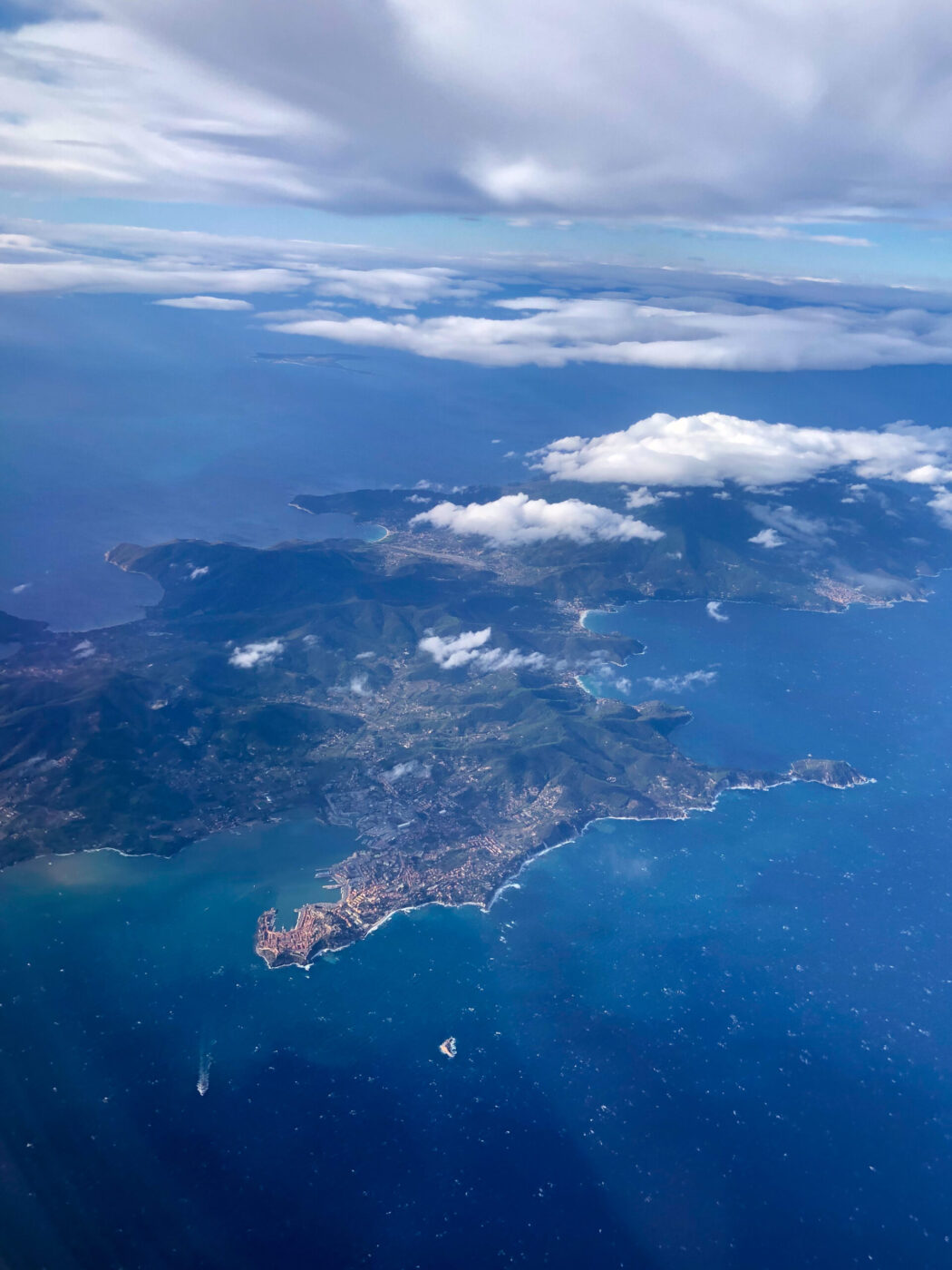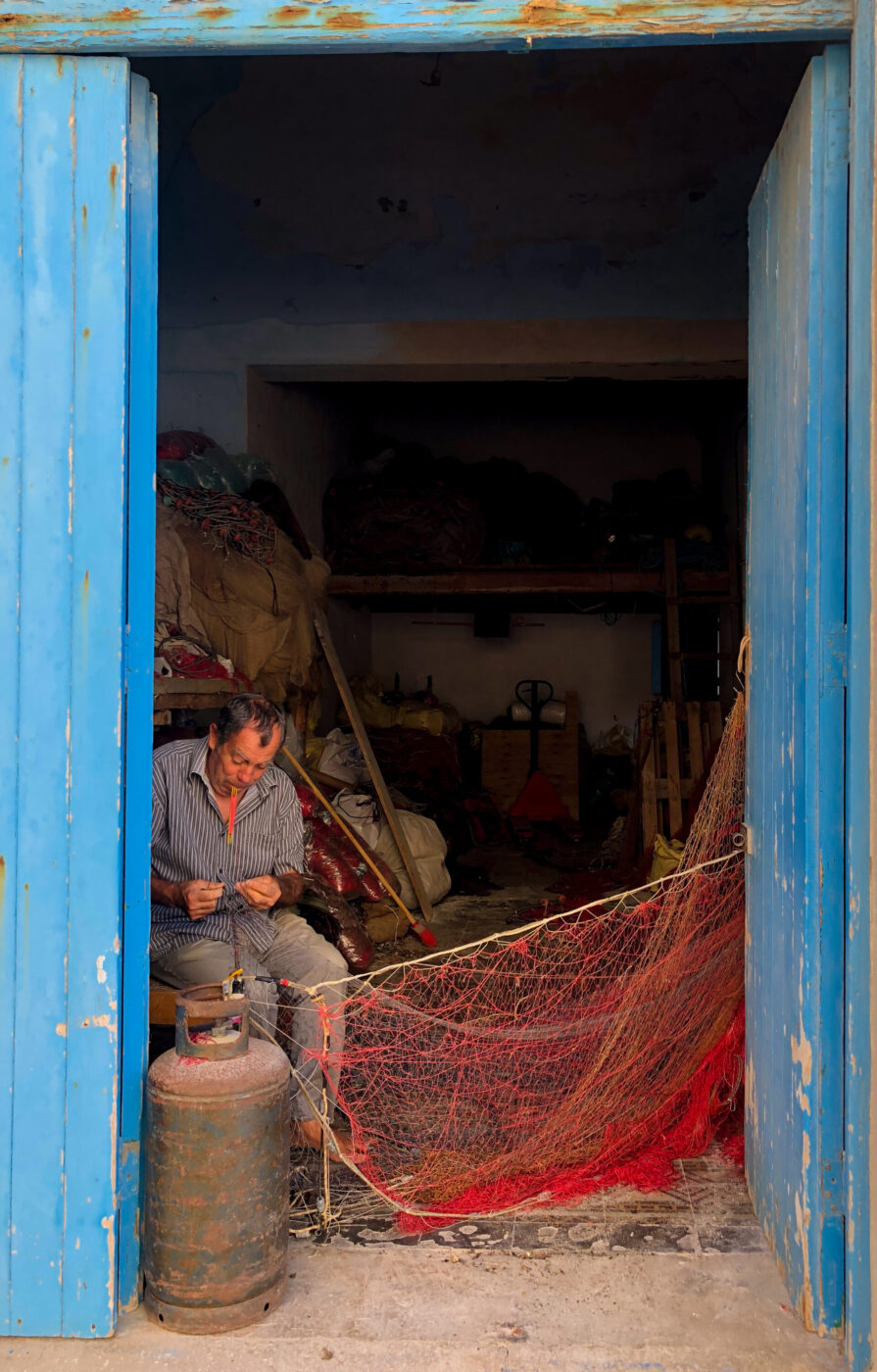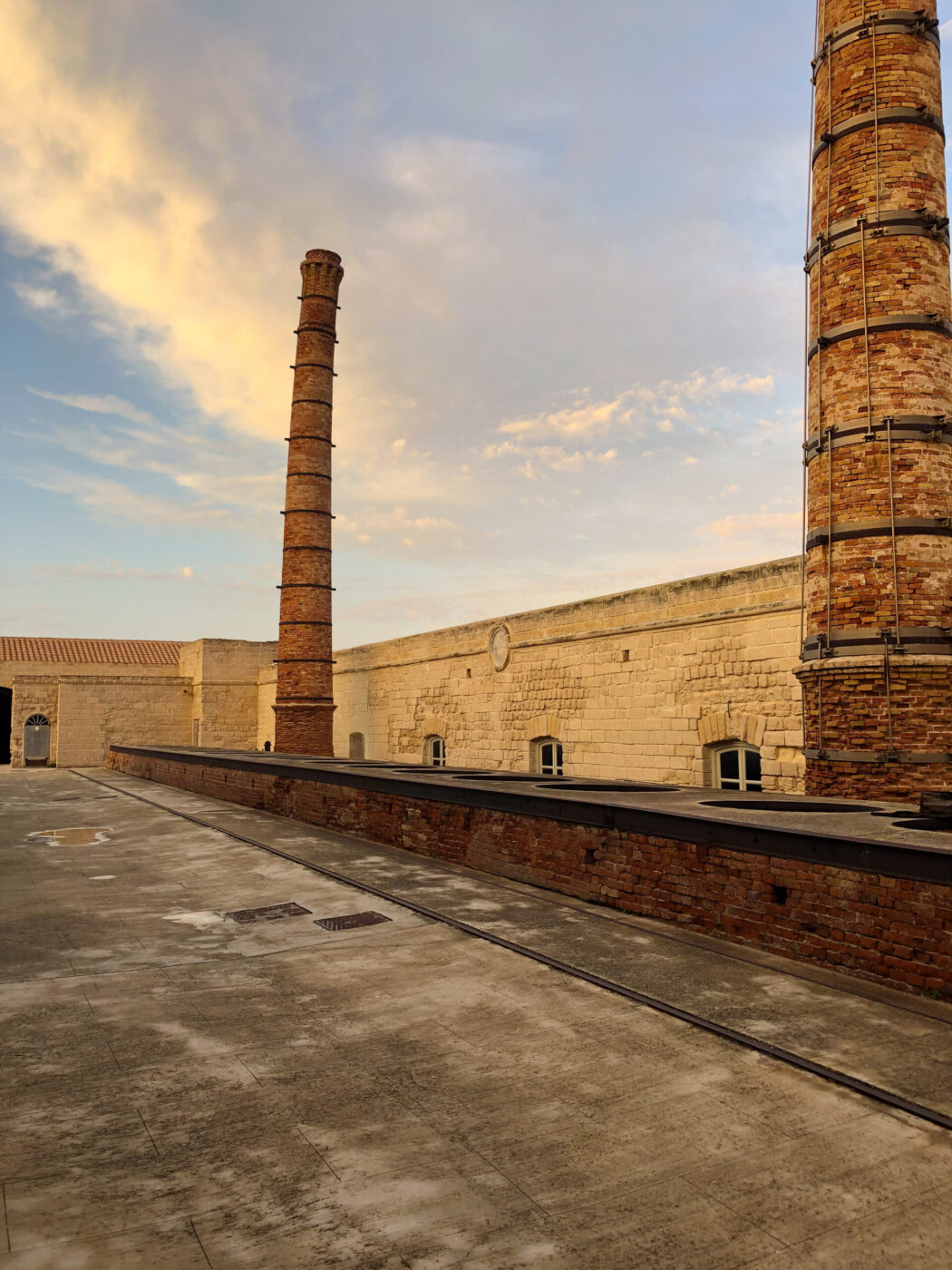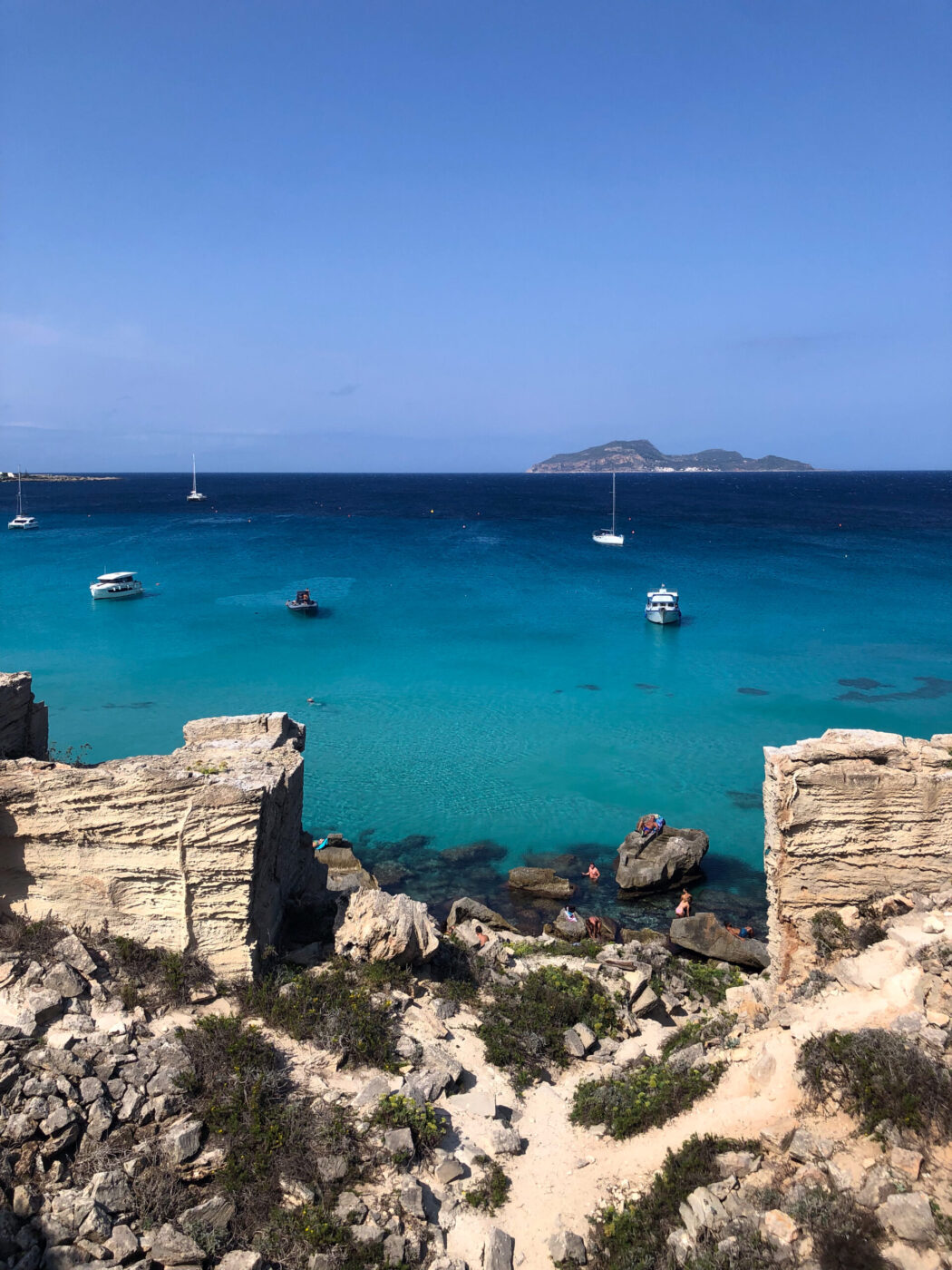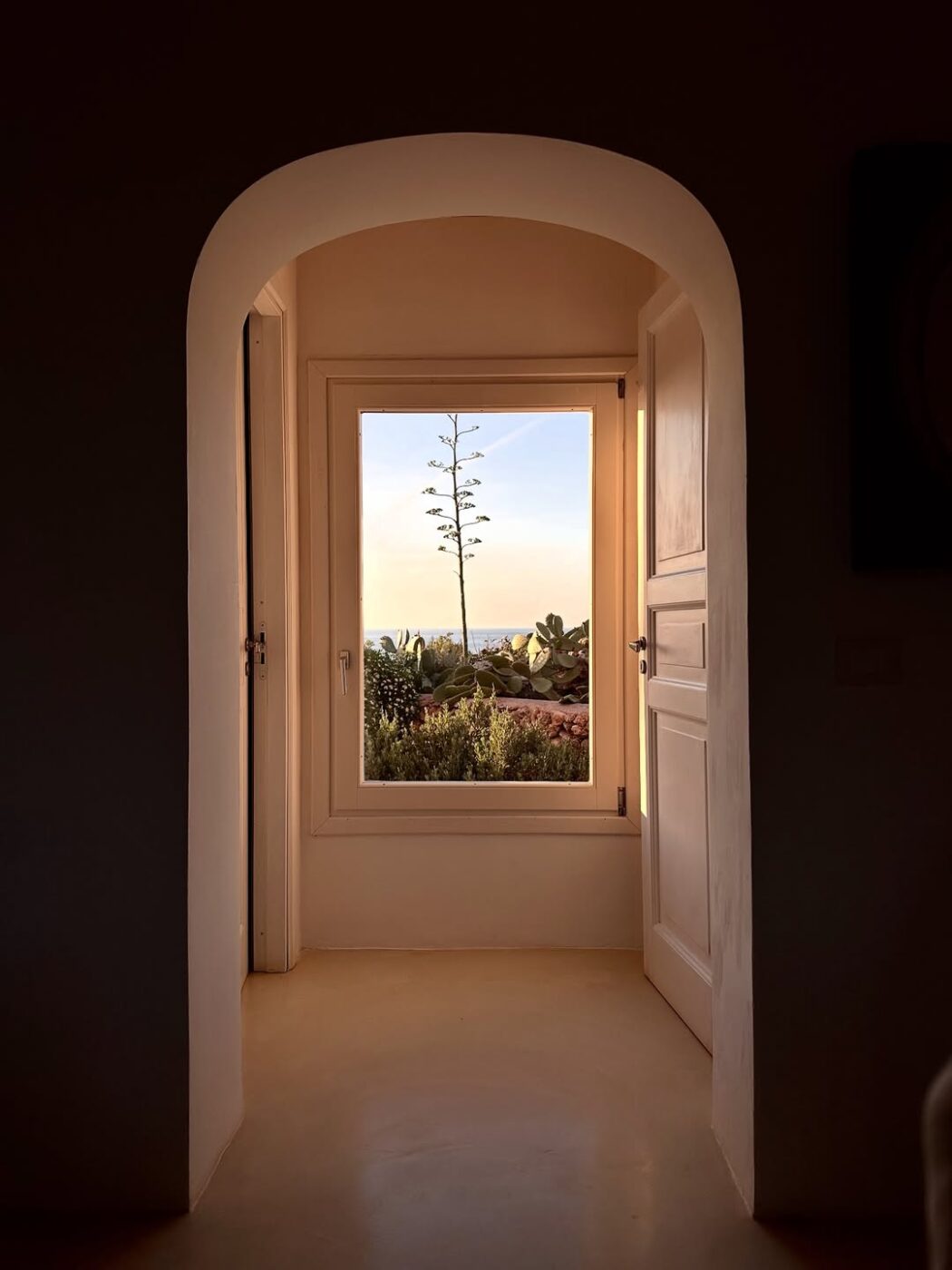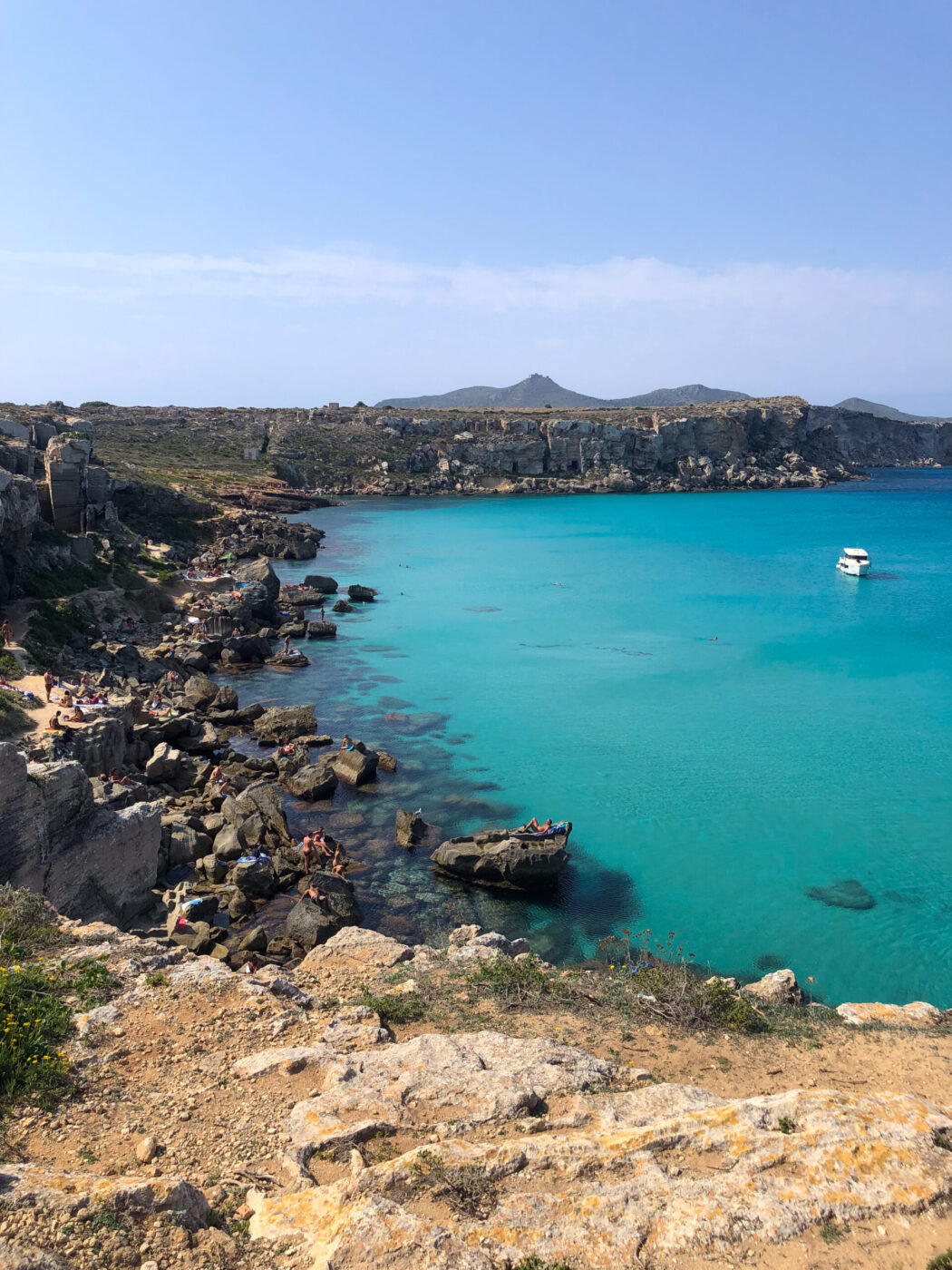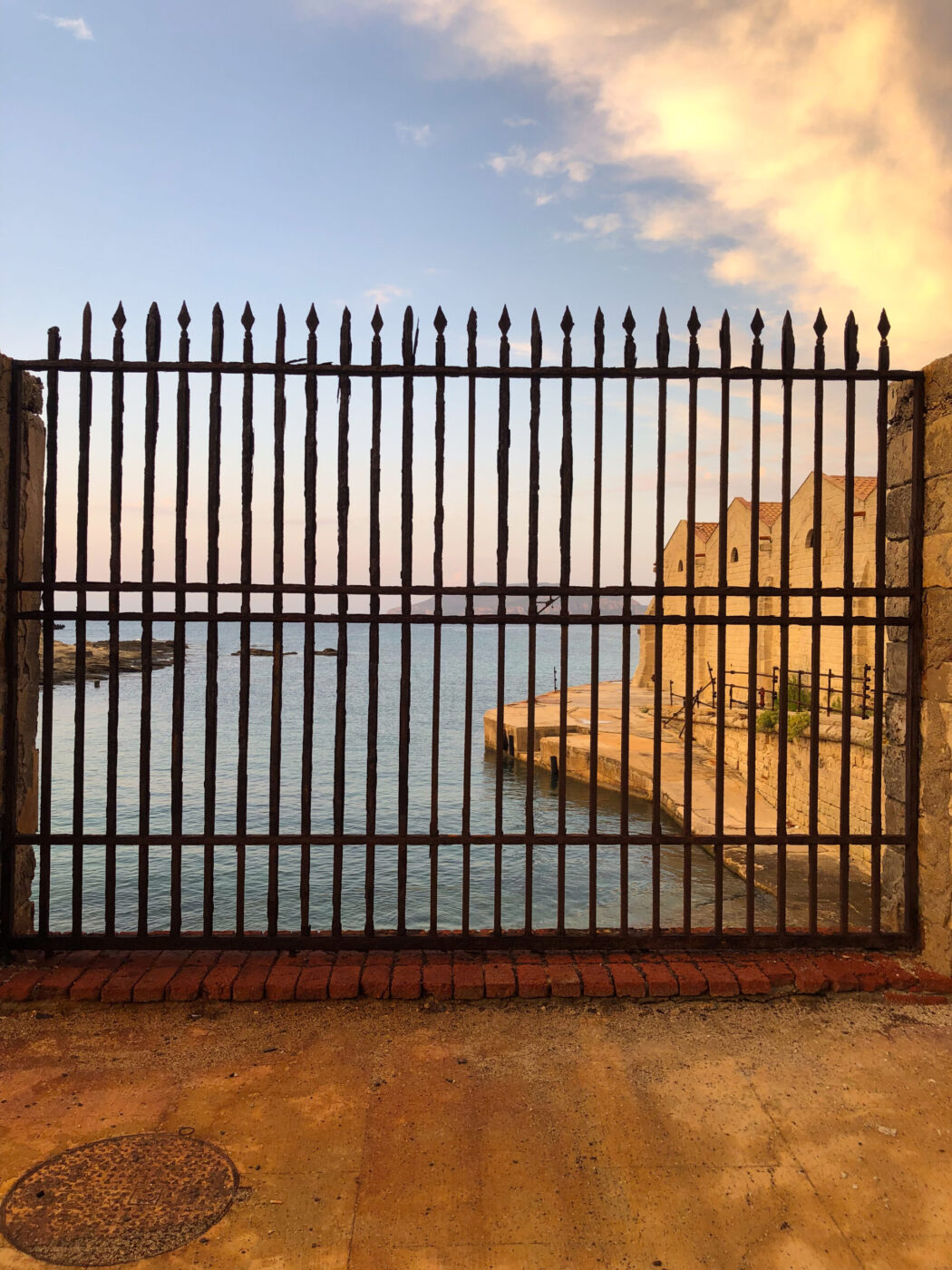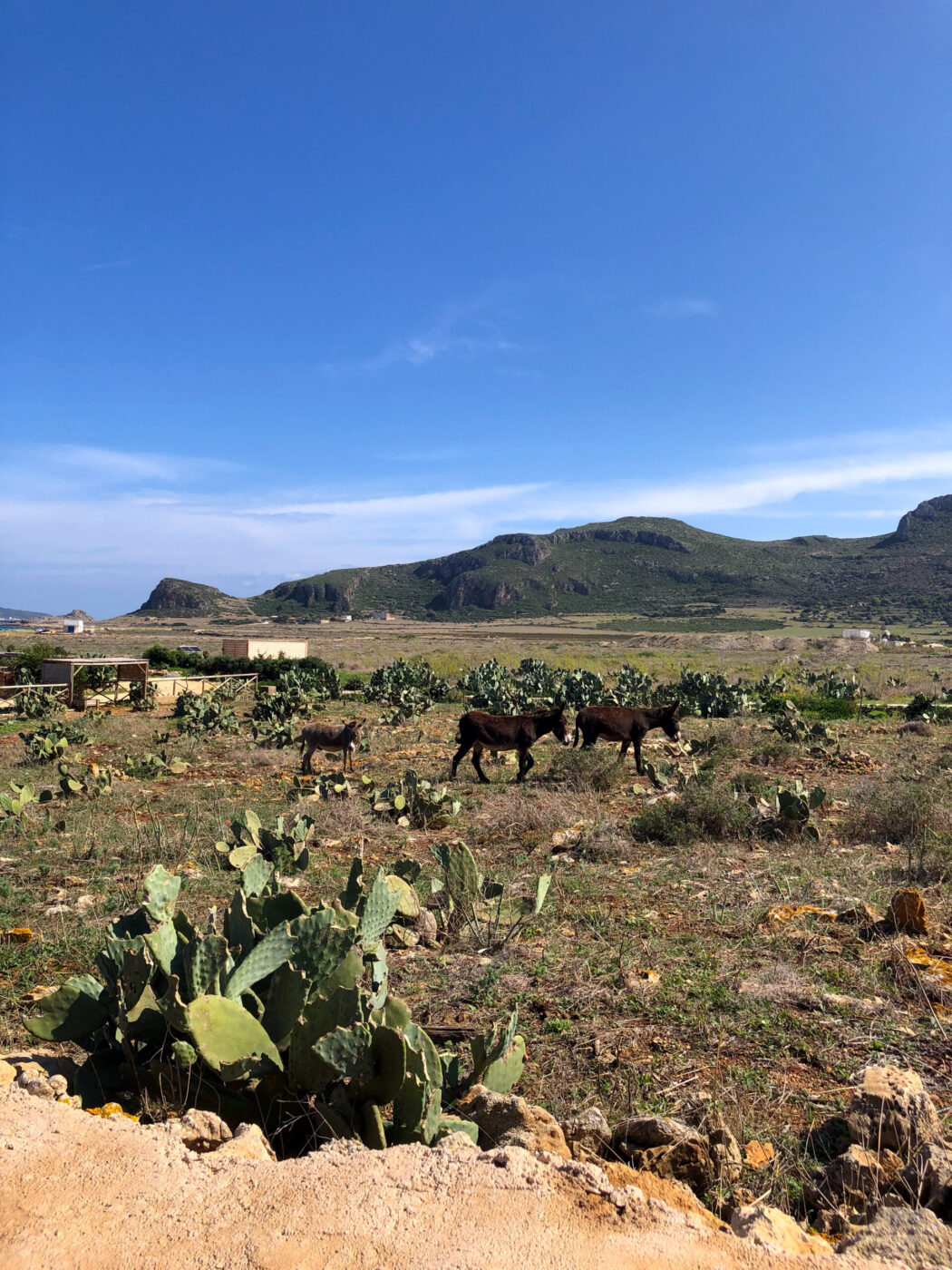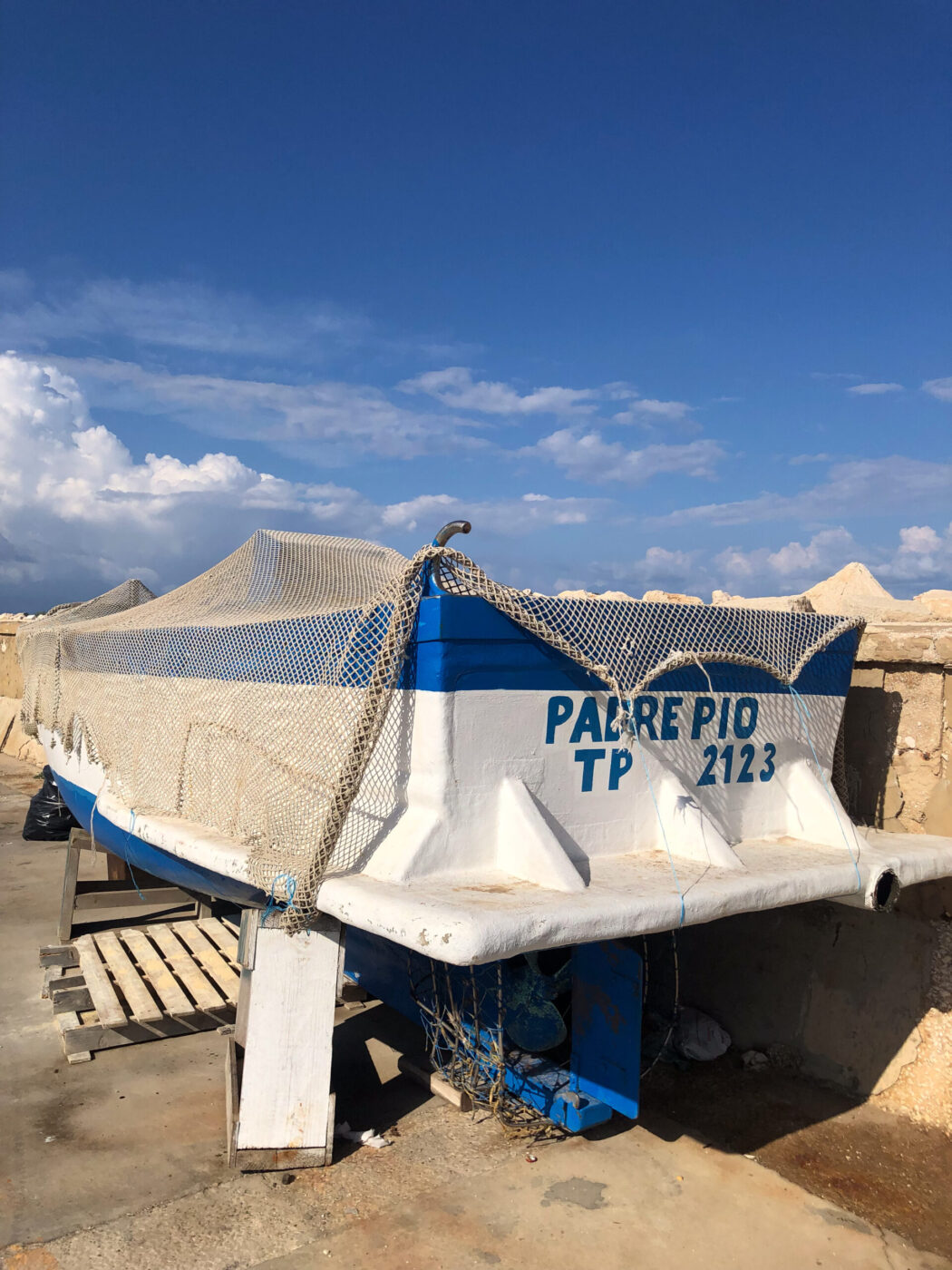Islands are appealing as much for what they offer as for what they don’t—24/7 access, a fondness for punctuality, the daily drama of mainland life with all its complex, shifting demands. Remoteness, or at least the idea of it, has always been integral to their allure, drawing everyone from backpacking nature lovers to high-profile billionaires in search of isolation to places where it might be possible, even in an era of relentless connectivity, to decompress, unwind, and see nothing but the surrounding sea or a rogue goat or two on an ancient, barely-paved roadway.
Italy’s hundreds of islands sprinkled off the country’s extensive coastline range from five-star glamor havens like Capri to such uninhabited spots as Zannone near Ponza. A number of these rocky outposts, like Favignana, the largest of the Egadi Islands located 12 nautical miles south of Trapani, fall between the endpoints of development, or lack of it; they’re accogliente, but in a localized way, with mostly family-owned hotels, inns, and restaurants, catch-all convenience stores, languorous siesta hours, and an infrastructure that can be sensitive to the whims of nature.
For the last decade or so, Favignana has enjoyed a sweet-spot on the tourism spectrum as an “insider’s secret.” A secret for some that is; its small population (4,500) grows in July and August as mainland Sicilians, escaping their own island’s popularity, come here; southern Italians and branché Europeans do too, the latest in a long line of off-islanders who for thousands of years have set their sights on this tiny Mediterranean bauble. Among the earliest “visitors” were the Phoenicians, Romans, and Saracens—the usual suspects marauding about in ancient times—who came to conquer (not sunbathe on) the rocky, gorgeous island with seas colored a kaleidoscope of blues and teal.
The island saw another invasion of sorts when a Hollywood crew numbering in the hundreds set up camp last spring for the filming of what is likely to be next summer’s blockbuster, The Odyssey, based on the Homeric epic from the 8th century B.C. Apart from the stunning and for the most part new-to-cinema geography, it’s not surprising that Christopher Nolan, the two-time Academy Award winner (for Oppenheimer), decided on Favignana as one of his locations.
Various literary scholars believe it to be among the places Homer described (the “goat island”) in his epic, as he chronicled Odysseus’ harrowing, 10-year meanderings back to Ithaca after the Trojan War. Myth is history on many islands, especially where the man-made landmarks are few, adding to the romance of these far-flung watery refuges.
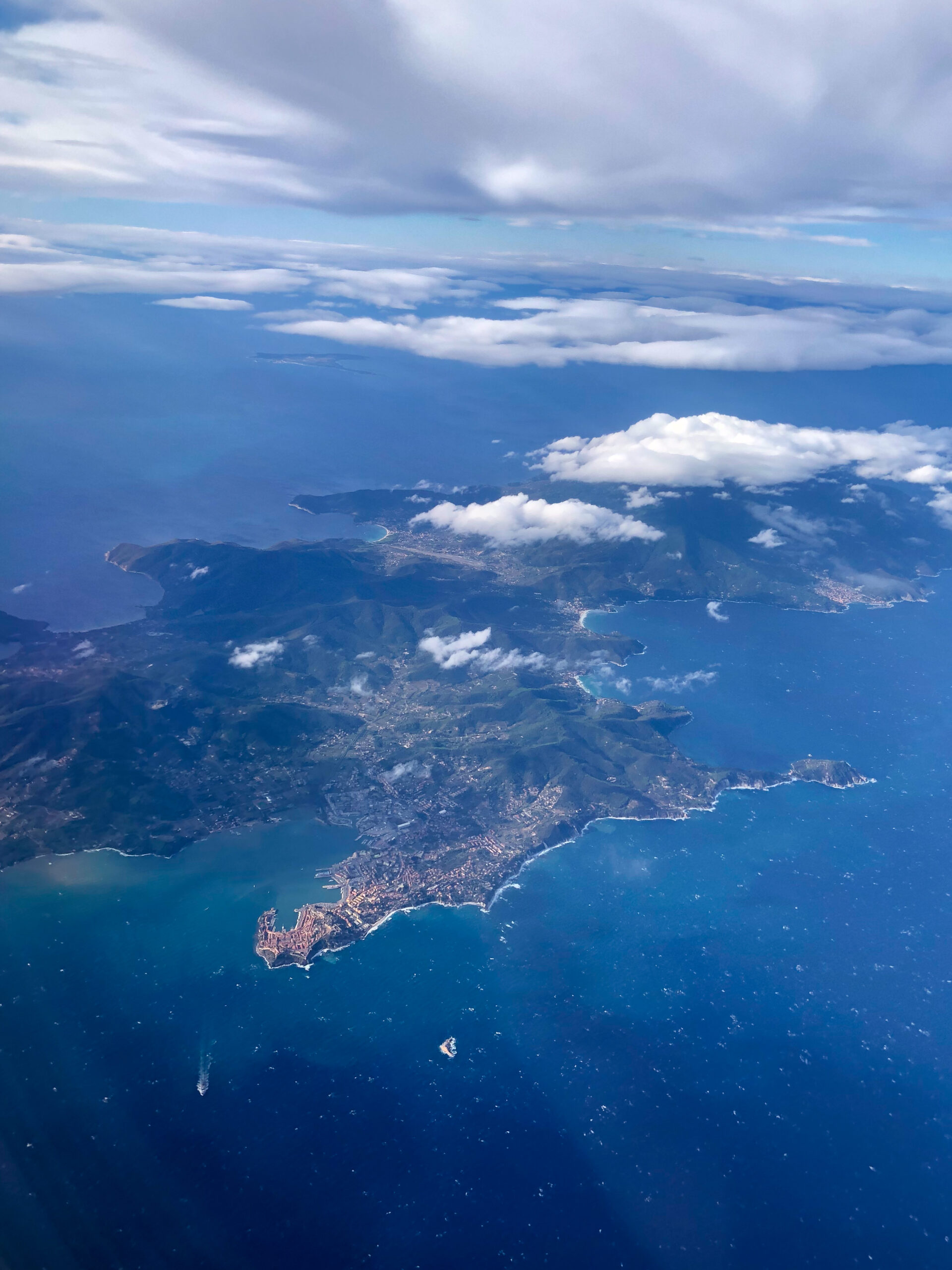
In March and April, shots of the Odyssey crew—Nolan grabbing a quick bite, posing with locals, directing a wildly bearded Matt Damon (who plays Odysseus), along with Zendaya perched gingerly on a pebbled coast in a flowing, red-carpet-ready Grecian-style gown—began to turn up on Instagram. The images are tight crops of the celebrities, not the scenery, so you’ll have to wait for the movie, scheduled for release in July 2026, (or visit) to see the island in all its dramatic, rugged splendor. (The cast also includes Anne Hathaway, Tom Holland, Robert Pattinson, Lupita Nyong’o, and Charlize Theron.) Favignanans were enlisted to get behind the camera, too, as extras depicting ancient warriors in the “mythic action” drama.
With some of its most photogenic locales expected to be shown on screen, Favignana is poised to experience unparalleled exposure next year, although no one can predict what the film’s impact on visitor numbers will be. Some movie tourism is short-term, and “interest” can be more in the form of Google searches than actual bookings; other places immediately experience a White-Lotus effect with a considerable uptick in arrivals, or more consequentially, the overtourism that’s plagued places like Dubrovnik due to its Game of Thrones sites. But many feel, at least for now, the resulting publicity will be a welcome boon to the local economy.
Favignana Municipal Councilor Ignazio Lucido sees The Odyssey opening the island and the other Egadis to more than proximity tourism (visitors coming from nearby areas). “We are already thinking of a strong communication strategy that will increasingly launch the islands towards internationality,” he says.
Ginevra La Cavera, owner of boutique hotels Dimora dell’Olivastro and Dimora Cala del Pozzo on the island, is hoping the increased visibility will lead to an extended travel season, where visitors come not for July and August, but in off-season months like March or October and November. “The island wouldn’t be able to handle an even greater influx” during key summer months, she says.
Logistics may help keep the numbers down. While greater in peak season, there are only a certain number of ferry crossings per day from Trapani and Marsala; Favignana is not a stop for large cruise ships (the Egadi Islands are a Marine Protected Area). Giacomo Incarbona, who heads up the Egadi Islands Hotel Association, feels the movie’s greatest impact will be for off-season cultural tourism, with visitors, who come for hiking and trekking before temperatures soar, mapping out the places seen in the film. “Favignanesi are a proud people,” he says. “They will be ready for whatever the release of the movie may bring.”
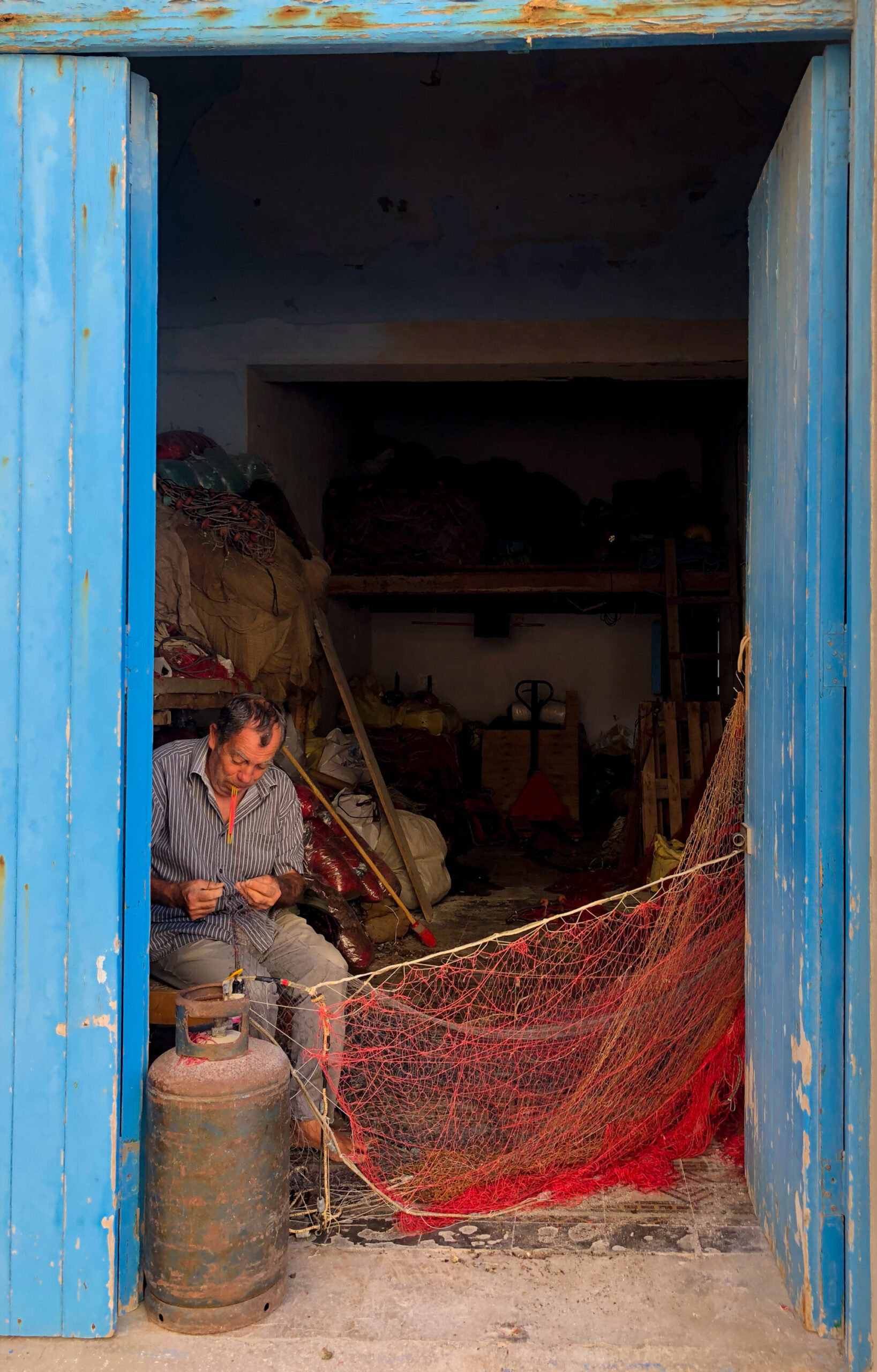
Massimo Girombelli, a member of the famous Girombelli fashion family who maintains a menswear atelier in New York, first visited Favignana 10 years ago during an August sailing trip; he initially planned to spend most of his time there in the water, scuba diving. (The Egadi Islands’ protected Marine Park is known for its clear waters and diverse seabeds), but what he found on land (or rather what he didn’t find) sold him on Favignana’s subtle lures.
Well acquainted with summer Mediterranean hotspots like Ibiza and St. Tropez, Girombelli says he felt the immediate pull of Favignana’s alternative reality. “It’s a quiet place,” he says, “one of the most untouched spots in Italy. When I visited, there were just a few things to do,” among them touring the island by scooter and taking in the stunning seascapes, especially from such lookouts as Monte Santa Caterina. The island had no famous-label boutiques, edgy art museums, or discos, Girombelli recalls, although that didn’t mean there wasn’t any nightlife. Favginanans offered their own version of authentic nocturnal experiences, creating pop-up dance spots all over the island for “fantastic dancing under the stars,” he says.
Favignana’s low-key-vibe, rustic settings, and technicolor seas remain the island’s chief attractions. After you arrive by ferry to the small port and head to the center of the main town, also called Favignana, you’ll walk past Palazzo Florio. With its coral-and-bisque facade and Art Nouveau and Neo-Gothic flourishes, this former trophy home serves as an exuberant reminder of the Florios, the powerful Sicilian family who owned the Egadi Islands in the 1800s and helped transform Favignana, through enterprising fishing ventures, into the tuna capital of Italy. Stroll the roads adjacent to the harbor for about 10 minutes and you’ll come to the place responsible for that transformation, the Ex-Stabilmento Florio delle Tonnare di Favignana e Formica, once a major tuna processing center for Europe. (It now houses a museum which can be visited with a scheduled tour.)
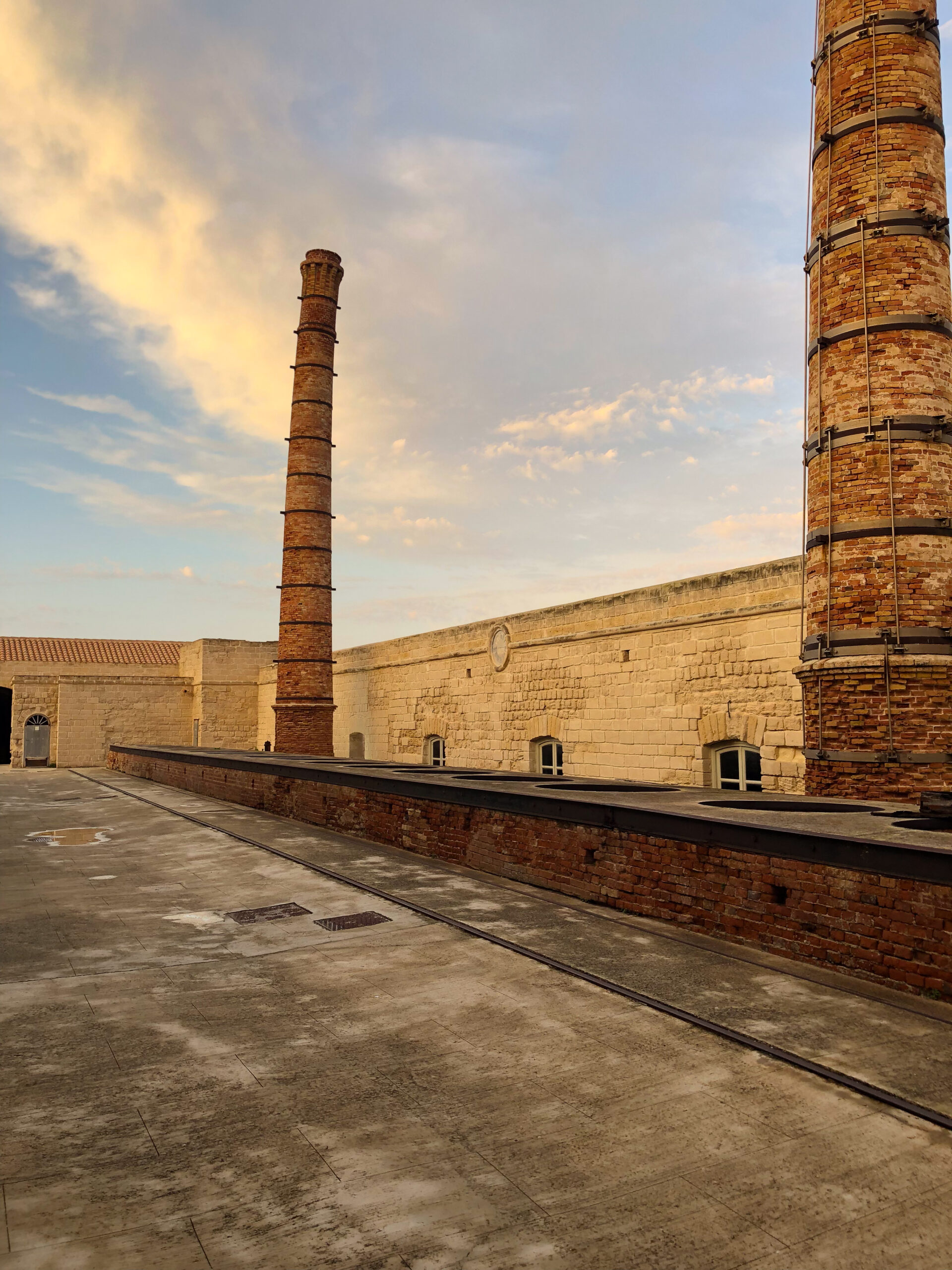
Ex-Stabilmento Florio delle Tonnare di Favignana e Formica
The best way to get around is by bike (rental shops are in town and near the harbor). As you cycle the island, the landscape you pass is often arid and flat, with simple block-shape houses and occasional bursts of magenta from bougainvillea spilling over low tufa-stone walls. It’s vaguely remote in a way that reminds you of Long Island’s Montauk before it was discovered as the Hamptons’ last stop before Portugal. Unique to Favignana, however, is the recessed terrain on the eastern part of the island—the deep, graphic tufa quarries, where stone was extracted (like tuna fishing, once a cornerstone of the local economy) and which have now been turned into settings for hotels, gardens, and event spaces (like the Cava Santa’Anna).
The scenic drama only increases as you near the sea, with many of the island’s coves reachable by bike along its 20-mile perimeter. Perhaps Favignana’s best-known cove is Cala Rossa on the northeastern coast with seas so intensely turquoise they take on an almost Day-Glo quality in full sunlight. The Odyssey crew is said to have filmed here (along with Cala Azzura and Castello Santa Caterina; more on these below). About a 15-minute ride from town, this cove sits in a natural surround flanked by large limestone (calcarenite) cliffs and oversized sculpture-like rock formations. Here, as someone once told me at another Italian resort when I searched in vain for sand: “You pick your rock.” If you want to sunbathe or slip (gingerly) into the sea, be prepared for a steep descent and sharp stones. (This isn’t an equipped beach, meaning no lifeguards. Water shoes are highly recommended, as is arriving by boat.)
If you’re opting for sand both onshore and in the water, head to Cala Azzurra, so named because of the the vari-toned blue of its waters, on the southeastern side of the island, where there are two beach areas tucked into a wind-protected setting with distant views of Marsala’s shores. (As with Cala Rossa, exercise caution when navigating the paths and rocks to the sea. There are no lifeguards.) If you want sand and an equipped beach, go to Lido Burrone, about two miles from Azzurra.
But Favignana’s wild and rugged coastline is perhaps its greatest calling card, best enjoyed with a leisurely sail on a boat. Max Girombelli said he chartered a Turkish gulet to do this and to sail to the sibling Egadi, Marettimo, which he found “even more untouched.”
To see Favignana from on high, there’s the Castello di Santa Caterina, an abandoned Saracen fortress from the 1400s and a military lookout during WWII, with a horizon-spanning vantage point at 1,000 feet. It involves a 45-minute steep climb (you can take a scooter part of the way). While the castle was built long after Homer wrote his masterpiece and might not time-travel your imagination back to his day, it can be one of the best places on the island to experience (if you go early enough) what the renowned novelist and travel writer Lawrence Durrell (The Alexandria Quartet) once described as the “invisible constant,” that process of getting to know the essence of a destination by full immersion in a suggestive setting.
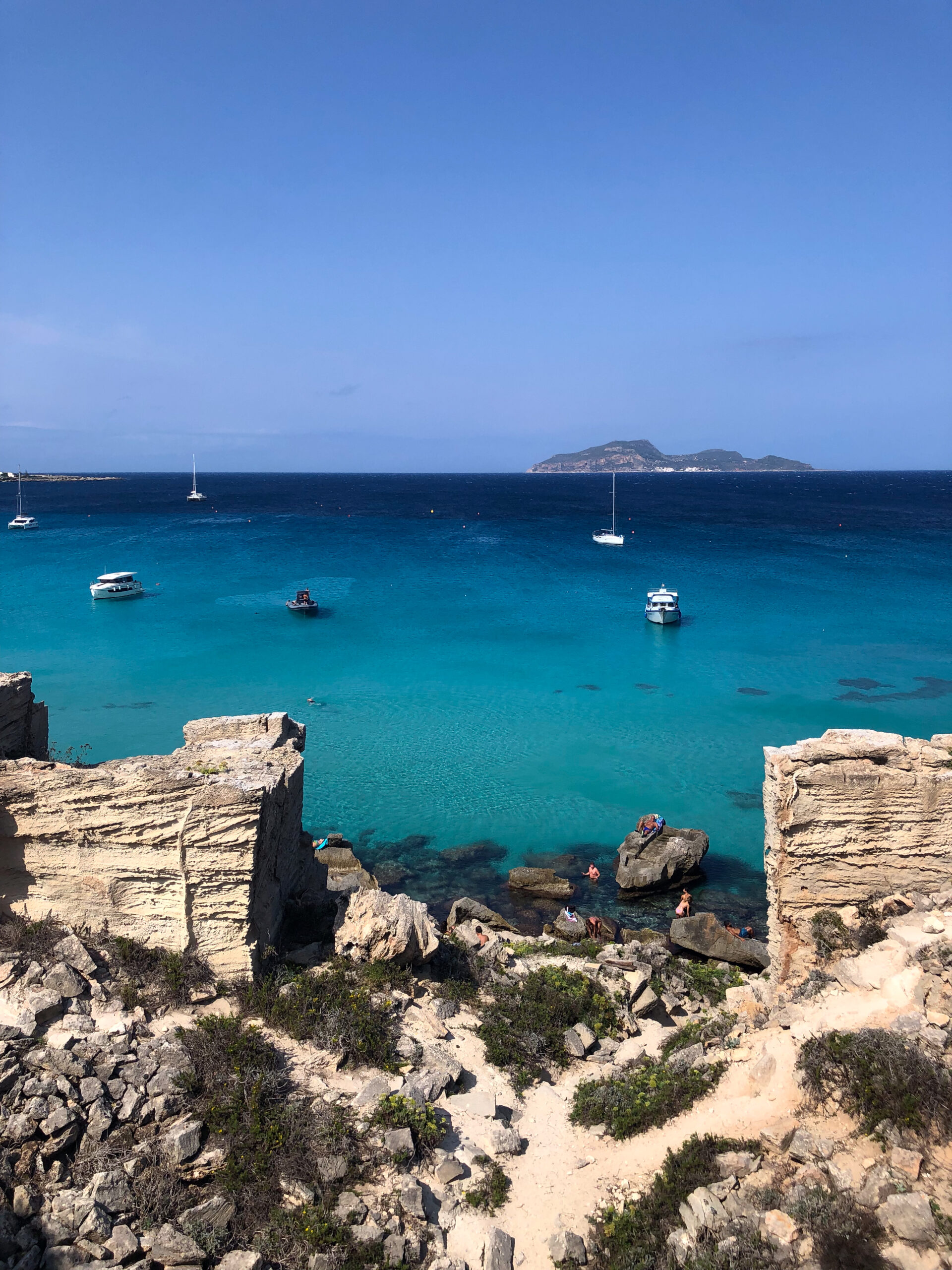
Cala Rossa, Favignana
How to get to Favignana:
The majority of ferries and hydrofoils, which take 30 minutes, depart from Trapani, although you can travel by boat from Marsala, too. Book well in advance during peak travel months, and make sure to reserve a return trip.
What and where to eat on Favignana:
Tuna, of course. Long known as the tuna epicenter of Italy, Favignana offers plenty of it, whether from fast-food shops or fine restaurants. There’s even an “aperitonno” hour, with drinks-accompanying nibbles largely tuna-based, so you get the idea.
Lorenzo Sias runs one of the island’s most revered restaurants, La Bettola, a place founded by his grandmother close to 40 years ago. (Matt Damon stopped by during filming.) Here, the longtime classics include shrimp tartare, tuna couscous, polpette di tonno, busiate with pistachio pesto and shrimp, and fresh tuna.
Roman-born Giancarlo Riso founded the popular Quello che c’è…c’è where specialties include the fresh daily fish carpaccios, as well as seafood takes on Roman classics, like bucatini with red-tuna amatriciana and spaghetti with seafood carbonara. There’s a good selection of grilled fish for secondi (octopus, tuna steak, red prawns).
Where to stay on Favignana:
Dimora dell’Olivastro. This former villa, once the family vacation home of current owner Ginevra La Cavera, lies at the foot of Monte Santa Caterina; it became a boutique hotel about 10 years ago, with six stylish rooms decorated in an ivory and taupe palette. Views from the property, set in a lush Mediterranean landscape with 2,000 olive trees and 100 varieties of Mediterranean plants, take in the nearby island of Marettimo and the Punta Sottile lighthouse. The focus here is on relaxation and wellness—guests can book private yoga or pilates classes and indulge in freshly-baked offerings at breakfast. (The hotel is committed to using organic artisanal products from Sicilian providers.) Guests can also book the hotel’s sail boat, Lady Isabel, to explore the island’s coastline and cove beaches.
La Cavera owns another hotel, Dimora Cala del Pozzo, close to a top Favignana beach. The grounds of this chic Italian-country-style retreat, a former mannera or farmhouse, include the organic farm La Cavera has created to supply produce to her properties. This secluded spot with eight rooms is well positioned for cycling and hiking excursions, and, of course, a visit to the Cala del Pozzo beach, only 300 steps away. Guests can dine at the vegetarian restaurant Salicornia located at the hotel or the nearby Cibo Chiaccerie e Vino, which offers a splendid setting by the sea, ideal for sunset drinks. Both restaurants use organic products produced by the farm, among them olive oil, flours, and honey, for such dishes as whole-grain busiate, vegetable polpette, along with fresh daily sfizi for aperitivo.
The four-star property Cave Bianche has the distinction of being built amid one of the island’s famed stone quarries. Designed to make the most of natural light and organic materials, the hotel, surrounded by grounds with a variety of tropical fruit trees and succulent plants, is structured with cooling limestone walls and offers a large swimming pool and proximity (about a half-mile) to the sea. Cave Bianche also has apartments to book in the town of Favignana, which are located about 100 meters from the water.
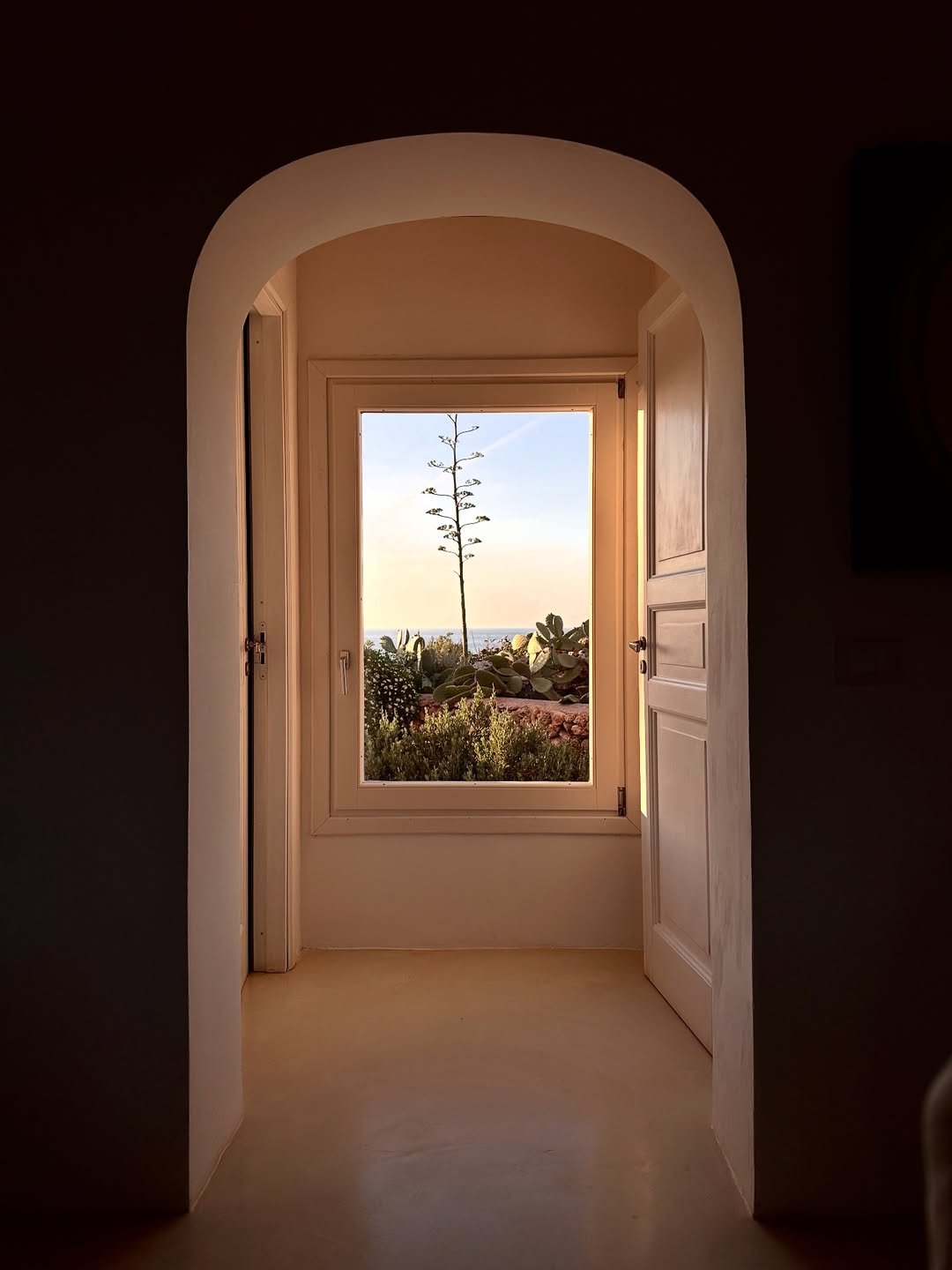
Courtesy of @dimoracaladelpozzo


